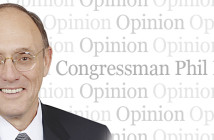By Jeff Keeling
Ten days ago, with the early blooming Joe Pye and Ironweed adding splashes of lavender and deep purple to our journey, the lovely and talented Angela and I pedaled the length of the now-complete Tweetsie Trail. The final three miles of the 10-mile recreational trail along the former ET&WNC railroad had just been completed, from downtown Elizabethton to Hatcher Lane south of town on the way to Valley Forge.
The trail, a major community asset and wonderful example of regionalism and private-public partnerships, will celebrate the Elizabethton end’s completion with a ribbon cutting Sept. 4 at the Hatcher Lane end. Fun events are also lined up for Sept. 5, a Saturday, concluding with a family event from 6-9 p.m. at Elizabethton High School’s track, which borders the trail.
As we rode along the right-of-way that once transported people and raw materials along a corridor from Johnson City to Boone, N.C., Angela and I passed much evidence that the economic realities the Tweetsie was such a part of from the 1890s to the 1950s are long past. Factories that provided work to many were largely gone or abandoned, with an active Snap-On Tools plant at the journey’s end a notable exception.
Yet we rode through the kind of natural beauty people in many parts of this country only dream of inhabiting –suggesting new and successful economic realities can lie ahead for this region if we take advantage of our assets.
Several days after our ride, the Washington County Economic Development Council met to review a consultant’s “Economic Development Assessment” of the Johnson City metropolitan statistical area (Washington, Carter and Unicoi counties). The report cited some relatively grim statistics about job growth and educational attainment in the area, but urged leaders of all three counties, and their cities, to develop an umbrella regional economic development partnership that can put the entire region’s best foot forward.
You can read the full report at jcnewsandneighbor.com/regionalismreport.
Leaders from Carter and Unicoi counties, and Elizabethton and Erwin, were in attendance. They’ve been in talks with WCEDC leaders about such an effort for several months now and seem positively disposed to the notion.
“This has been attempted. This is not the first time, so it’s important that we get it right this time,” said Carter County Bank executive Dale Fair, who is also the county’s former mayor. “There’s been a desire to do this for many years.”
Companies and other prospective investors in our community don’t see county and city lines. They see a region, and in fact they see one that extends beyond just our MSA to encompass the greater Tri-Cities. The more quickly our leaders, private sector and public, get that through their heads, lay down their swords and start working together to tackle our problems and maximize our opportunities, the better off we’ll all be.
Here’s how incoming WCEDC Chairman Tommy Burleson put it last week: “We’ve got two choices here. We can stick our head in the sand and feel sorry for ourselves, or we can take this report, put us a plan together, and execute the plan. We can’t wait forever.
“As we start putting something together, if it doesn’t work, we’ll back up and readjust it and move forward, but we’ve got to continue to move the ball forward. We’ve got a great opportunity here. There’s a lot of smart people here. We can make this happen. It’s going to take a little time, it’s going to take a commitment, and just because we’ve done something the same way for 100 years doesn’t mean it’s the right way to do it. We might have to change just a little – but that’s ok.
“Our job as the Economic Development Council is to push this thing forward, and I can assure you that we’re going to do our best to make that happen.”
Six or so years ago, we had “done something the same way for 100 years” with respect to the Tweetsie railroad. The result was an iconic testament to the late 19th century and first half of the 20th. Back then, this area’s abundant natural resources and cheap labor meant resource extraction and large factories employing thousands.
But by the early 2000s, the vast majority of the factory jobs were gone, and the rusting rails traversing the route from Johnson City through Elizabethton and up the Doe River Valley – long empty of locomotives – passed shuttered factories more often than active ones.
So some folks determined change was in order. It wasn’t easy to move the Tweetsie Trail from vision to reality, but it got done. Local governments from two counties and two cities saw the greater good and collaborated. The private sector stepped in with a determination to make it happen much faster and more cost-effectively than it otherwise would have.
A recreational trail that will serve our region for decades to come has shown us regionalism and private-public partnerships are the way forward for this community. Here’s hoping our leaders continue pressing forward in the same fashion when it comes to economic development.





